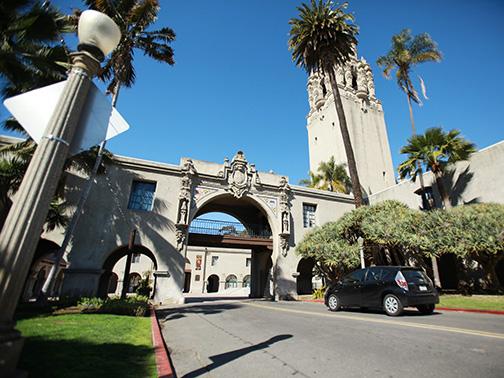San Diego State’s Center for Research in Mathematics and Science Education launched a new initiative in collaboration with the Balboa Park Learning Institute earlier this month in an effort to incorporate art into the science, technology, engineering, and mathematics (STEM) fields.
The four-year initiative is funded by a more than $726,000 grant provided by the National Science Foundation. The InforMath Collaborative initiative specifically partners SDSU researchers with staff from the Reuben H. Fleet Science Center, Natural History Museum, Mingei International Museum, and the Museum of Photographic Arts to create programs that bring creative twists to mathematics.
Established in 2008, the BPLI regularly manages programs such as the InforMath Collaborative to help connect park organizations, teach communication and professional skills and develop community bonds.
Balboa Park Learning Institute Director Lisa Silagyi discussed the value of transforming STEM into “STEAM” by adding art into the mix.
“Artists, like scientists, innovate and share their work with society,” Silagyi said. “They observe carefully, hypothesize, and experiment. Art and math are inherently linked. If you look back to the Renaissance, artists were mathematicians. “
Principle Investigator and CRMSE Director Ricardo Nemirovsky and InforMath Co-Director and CRMSE researcher Molly Kelton will lead the program by working alongside the Learning Institute to assist in the execution of the initiative with hopes of implementing pilot projects for public participation by March 2014.
Looking forward, SDSU researchers anticipate reviewing and analyzing data from the pilots through September 2014, with plans to continue researching and developing programs with the participating art and science museums into the next two years.
Although InforMath is an interdisciplinary program, researchers Nemirovsky and Kelton hold a particular concern for improving mathematics learning experiences. As a result, they are looking to dispel common misconceptions associated with mathematics.
“One of the main and overarching goals of the program is to try to transform cultural perceptions of mathematics in collaboration with the other STEM fields,” Kelton said. “It’s been our experience as mathematics educators and educational researchers that there are a lot of widely circulating stereotypes, making it very limiting for learners. We’re trying to work through the institutions in the park to pursue the creation of learning experiences that talk back to some of these stereotypes and change those perceptions.”
Kelton hopes the InforMath Collaborative program can strengthen the relationship between SDSU and the wide array of resources for informal STEM learning available in San Diego.
Silagyi expressed the importance of interdisciplinary communities and said the initiative’s efforts will benefit SDSU in relevant ways.
“Often in education, content is isolated into specific disciplines, and as learners we don’t see or make the connections between and among math and art,” Silagyi said. “The programs, exhibitions and events that come from InforMath can open our eyes to the relevance and fun of mathematics learning, something that is all too often lacking.”
Photo by staff.







